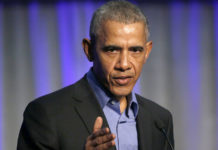On January 7th, the United States Supreme Court will hear arguments concerning President Biden’s vaccine mandate. The issue revolves around whether a government agency, such as OSHA, has the authority to dictate to private businesses that their employees must be vaccinated. Most Americans are not aware that The New England Journal of Medicine floated this idea in October 2020, three months before the vaccine was available. They stated quite plainly that encouraging employers to push the vaccine was a great way to avoid what they referred to as “legal challenges on due process grounds.” In other words, the government knows it can’t force you to get a vaccine, but because the public generally believes private business owners can operate their business how they see fit, employer mandates are a great workaround. Even Oklahoma Governor Kevin Stitt will not tell business owners they cannot mandate a vaccine. The bigger problem rests in the contradictions, misinformation, and outright lies that should have, in a just country, put an end to the Covid-19 non-sense. Both sides of the political aisle have allowed the media to push fear-based propaganda. No doubt because many of them hold stocks in vaccine companies. This should infuriate Americans as even once trusted conservatives who pretend to argue against the mandates, like Marjorie Taylor Greene, own stock in all three manufacturers pushing the Covid jab. President Donald Trump has even attacked his own fans for not supporting the booster shot. Proof that both political parties are working together to push the Covid psyop. Unfortunately, the Covid-19 narrative continues to plague us not because it is a true, world-ending pandemic, but because many people believe it is.
Too many Americans trust the media. Whether it be Fox News or CNN, they believe the media exists to keep them informed of daily events. According to the book Political Persuasion and Attitude Change, highly educated people are more likely to expose themselves to mass communication sources such as mainstream news. They pride themselves on staying informed and consider the media credible enough to allow their decisions to be influenced by the stories they present. Unfortunately, people don’t accept that the media exists to shape our perceptions and guide our opinions on what the global elite want us to consider, the most pressing issues of the day. People need to understand that there are massive efforts underway studying our reactions to mass communications. Under something called The Elaboration Likelihood Model of Persuasion, it is believed that most people cannot process information effectively, and all it takes is a simple “cue to action” to motivate a change in attitude. This model of persuasion was also applied to Covid-19. An article entitled Persuasion amidst a pandemic: Insights from the Elaboration Likelihood Model, highlights the fact that people’s ability to process information is studied and broken down into categories of high or low elaboration likelihood. This simply means that people are viewed as either having a high or low likelihood of processing information effectively. In other words, they are using public attitudes and abilities to process information to best frame their message to gain compliance with Covid-19 objectives. If the targeted audience’s ability to elaborate on the message is high, a different approach to pushing the information is used than when it is considered low.
“In brief, the ELM postulates that individuals’ motivation and ability to think about, or elaborate upon, a message determine how deeply they ultimately elaborate. The amount of elaboration given to a persuasive message determines the effect a given persuasion variable is likely to have and the mechanism by which that persuasion occurs. When elaboration is low, variables that can be simply and easily assessed can act as peripheral cues – features associated with a message that signal that the advocated position is desirable but are independent of the central merits (defining qualities) of the attitude object. For example, a credible source or simply having many arguments in a message can boost persuasion when elaboration is low, even if arguments in the message are not particularly strong.” (Persuasion amidst a pandemic: Insights from the Elaboration Likelihood Model)
What is being argued in the above quote is that under the ELM it is believed that persuading certain populations to adopt desired behaviors is easy to do because they do not have a high elaboration likelihood. Their decision-making processes are influenced by what is referred to as “peripheral cues.” This is known as taking the peripheral route of persuasion and is based on stimulus-response theory. In other words, people who fall under this model are easily persuadable because their initial reaction to the message in question, such as breaking news about a world-ending pandemic, is generally fear, and they do not go beyond the initial message in ascertaining any information for themselves. As it states in the quote above, even if the arguments in the message are not particularly strong, repeating them often enough is effective when elaboration likelihood is low. The whole Covid-19 narrative is non-sense, but it was repeated non-stop, and most people simply do not possess the ability to find out for themselves why it is nothing but baloney.
What about when elaboration likelihood is high? Influencing people who have a higher ability to elaborate is known as taking the central route of persuasion. The central route suggests that certain people can apply their own experiences, and carefully analyze the information as they receive it. The central route is taken because people are thinking deeply about an issue, therefore, it is necessary to tweak the message based on the recipient’s current beliefs or attitudes to achieve persuasion.
“When elaboration is high, variables can play several roles, each associated with additional conditions. First, a variable could communicate the central merits of the advocated position itself (e.g., good reasons for why a particular position should be adopted). For example, if a product is being advertised as a means to garner social status, an attractive, high-status source endorsing that product can serve as a strong argument. Of course, particular persuasion variables can only represent the central merits of some but not all attitude objects. Another high-thought role the variable can play is to bias processing of the message, particularly when the quality of the arguments within the message is ambiguous. For instance, learning that a source is credible can lead people to see ambiguous arguments as being strong, whereas a noncredible source can lead those same arguments to be seen as weak. Additionally, variables can impact the amount of confidence people have in their thoughts or attitudes when people encounter that variable after generating their thoughts about an attitude object. For example, if one generates positive thoughts in response to a message, learning that that message is from a credible source can boost confidence in those thoughts and lead to greater persuasion visually depictions where each of these roles for persuasion variables rests on the elaboration continuum.” (Persuasion amidst a pandemic: Insights from the Elaboration Likelihood Model)
The authors of this article admit that an understanding of people’s abilities to process information is helpful in predicting what their reactions will be to persuasive messages meant to influence certain behaviors. When it comes to Covid-19, targeted behavioral change revolved around what people believed concerning their susceptibility to Covid-19. The media played a major role in influencing this perception and pushing recommended interventions such as mask-wearing, social isolation, and, of course, vaccinations.
While the ELM explains persuasion likelihood, which may be applicable in many contexts, The Health Belief Model of behavioral change focuses exclusively on what people believe about their health and how to influence their choices to adopt recommended behavioral changes. The HBM is one of many behavioral health models and was developed in the 1950s to explain why people do or do not adopt certain health-related behaviors. Based on two theories of human behavior, cognitive theory and stimulus-response theory, which posit the ideas that people are either able to think for themselves or simply react to a given stimulus, the HBM works from four major constructs. Perceived susceptibility, perceived severity, perceived benefits, and perceived barriers. Do you notice the word perceive in front of each of those? This refers to what people believe about their susceptibility or the severity of the threat. This belief, of course, is largely influenced by the media, who pushed the propaganda based on what is known about our reactions to media through the Elaboration Likelihood Model of Persuasion. In the HBM, persuasive messages meant to influence behavior are referred to as “cues to action.”
There have been several studies of Covid-19 related behavior under the HBM. For instance, an article entitled Acceptance of the Covid-19 Vaccine Based on the Health Belief Model: A Population-Based Survey in Hong Kong found that government recommendation was the largest predictive factor of vaccine acceptance, and mistrust of the manufacturers was the largest factor in those that refused. What is important to understand, is that this information will be used to formulate new strategies to target those who are considered, vaccine-hesitant. Another study that took place years before Covid-19 but may have had a direct impact on how effectively the media and government were able to manipulate the public into mask-wearing was published in The Singapore Medical Journal in 2014. This study found that media blitzes and government-supported campaigns were highly effective in persuading people to wear masks. In the face of a perceived threat to health, people were easily persuadable. An interesting correlation to what was noted in the book, Political Persuasion and Attitude Change, is that higher educated people were more likely to wear masks. This coincides with the fact that most people consider the mainstream media to be a credible source of information, and when the information is presented in a credible manner, the choices made after receiving this information are reinforced. Finally, this study recommended that further efforts be made to increase the public’s perception of a threat in the face of noncompliance in the event there is mistrust in media or government sources. Finally, there was a study conducted more recently where social media groups were infiltrated to ascertain their perceptions of Covid-19 interventions and how to reshape these perceptions. Entitled The Use of The Health Belief Model-Based Deep Learning Classifiers for Covid-19 Social Media Content to Examine Public Perceptions of Physical Distancing: Model Development and Case Study, the objectives were to use the four constructs of the HBM to learn people’s attitudes towards social distancing and how to change them. They concluded this study by stating they intend to apply what they learned to other important health interventions related to Covid-19.
“The deep learning-based text classifiers developed in this study help to determine public perceptions toward physical distancing, using the four key constructs of HBM. Health officials can make use of the classification model to characterize the health behaviors of the public through the lens of social media. In future studies, we intend to extend the model to study public perceptions of other important interventions by public health authorities.” (The Health Belief Model-Based Deep Learning Classifiers for Covid-19 Social Media Content to Examine Public Perceptions of Physical Distancing: Model Development and Case Study)
There are multiple reasons to be skeptical of the Covid-19 narrative. The point of this article is to show that much of what the public believes is a manipulation based on our abilities to process information and the likelihood that we will “elaborate” on the message further than the way the media presents it to us. We are in the mess we are in because those that have a vested interest in ensuring we comply with the narrative have known for a long time that the media is a trusted source of information to most people. Whether they get their news from Fox or CNN, they consider themselves to be making intelligent decisions based on what information the media is presenting them. The more credible they consider the source, the more their opinions are reinforced. While many people are awakening to the reality that media does nothing but push propaganda, there is still a partisan divide that traps people in the false dialectic of the political left and right. Both sides of the aisle are operating within the framework that Covid-19 is a deadly world-ending pandemic while doing little to address the contradictions which prove it to be a lie. Contradictions that incidentally, should have infuriated the American people and put an end to the whole narrative. Even the revelations of gain of function research leave Dr. Fauci free to influence public opinion. It is the contention of this writer that the American people need to shit off their televisions and study the effects of persuasive communications, and the methods they use to study our attitudes as a first step in reversing course.
ary 7th, the United States Supreme Court will hear arguments concerning President Biden’s vaccine mandate. The issue revolves around whether a government agency, such as OSHA, has the authority to dictate to private businesses that their employees must be vaccinated. Most Americans are not aware that The New England Journal of Medicine floated this idea in October 2020, three months before the vaccine was available. They stated quite plainly that encouraging employers to push the vaccine was a great way to avoid what they referred to as “legal challenges on due process grounds.” In other words, the government knows it can’t force you to get a vaccine, but because the public generally believes private business owners can operate their business how they see fit, employer mandates are a great workaround. Even Oklahoma Governor Kevin Stitt will not tell business owners they cannot mandate a vaccine. The bigger problem rests in the contradictions, misinformation, and outright lies that should have, in a just country, put an end to the Covid-19 non-sense. Both sides of the political aisle have allowed the media to push fear-based propaganda. No doubt because many of them hold stocks in vaccine companies. This should infuriate Americans as even once trusted conservatives who pretend to argue against the mandates, like Marjorie Taylor Greene, own stock in all three manufacturers pushing the Covid jab. President Donald Trump has even attacked his own fans for not supporting the booster shot. Proof that both political parties are working together to push the Covid psyop. Unfortunately, the Covid-19 narrative continues to plague us not because it is a true, world-ending pandemic, but because too many people believe it is.
Too many Americans trust the media. Whether it be Fox News or CNN, they believe the media exists to keep them informed of daily events. According to the book Political Persuasion and Attitude Change, highly educated people are more likely to expose themselves to mass communication sources such as mainstream news. They pride themselves on staying informed and consider the media credible enough to allow their decisions to be influenced by the stories they present. Unfortunately, people don’t accept that the media exists to shape our perceptions and guide our opinions on what the global elite want us to consider, the most pressing issues of the day. People need to understand that there are massive efforts underway studying our reactions to mass communications. Under something called The Elaboration Likelihood Model of Persuasion, it is believed that most people cannot process information effectively, and all it takes is a simple “cue to action” to motivate a change in attitude. This model of persuasion was also applied to Covid-19. An article entitled Persuasion amidst a pandemic: Insights from the Elaboration Likelihood Model, highlights the fact that people’s ability to process information is studied and broken down into categories of high or low elaboration likelihood. This simply means that people are viewed as either having a high or low likelihood of processing information effectively. In other words, they are using public attitudes and abilities to process information to best frame their message to gain compliance with Covid-19 objectives. If the targeted audience’s ability to elaborate on the message is high, a different approach to pushing the information is used than when it is considered low.
“In brief, the ELM postulates that individuals’ motivation and ability to think about, or elaborate upon, a message determine how deeply they ultimately elaborate. The amount of elaboration given to a persuasive message determines the effect a given persuasion variable is likely to have and the mechanism by which that persuasion occurs. When elaboration is low, variables that can be simply and easily assessed can act as peripheral cues – features associated with a message that signal that the advocated position is desirable but are independent of the central merits (defining qualities) of the attitude object. For example, a credible source or simply having many arguments in a message can boost persuasion when elaboration is low, even if arguments in the message are not particularly strong.” (Persuasion amidst a pandemic: Insights from the Elaboration Likelihood Model)
What is being argued in the above quote is that under the ELM it is believed that persuading certain populations to adopt desired behaviors is easy to do because they do not have a high elaboration likelihood. Their decision-making processes are influenced by what is referred to as “peripheral cues.” This is known as taking the peripheral route of persuasion and is based on stimulus-response theory. In other words, people who fall under this model are easily persuadable because their initial reaction to the message in question, such as breaking news about a world-ending pandemic, is generally fear, and they do not go beyond the initial message in ascertaining any information for themselves. As it states in the quote above, even if the arguments in the message are not particularly strong, repeating them often enough is effective when elaboration likelihood is low. The whole Covid-19 narrative is non-sense, but it was repeated non-stop, and most people simply do not possess the ability to find out for themselves why it is nothing but baloney.
What about when elaboration likelihood is high? Influencing people who have a higher ability to elaborate is known as taking the central route of persuasion. The central route suggests that certain people can apply their own experiences, and carefully analyze the information as they receive it. The central route is taken because people are thinking deeply about an issue, therefore, it is necessary to tweak the message based on the recipient’s current beliefs or attitudes to achieve persuasion.
“When elaboration is high, variables can play several roles, each associated with additional conditions. First, a variable could communicate the central merits of the advocated position itself (e.g., good reasons for why a particular position should be adopted). For example, if a product is being advertised as a means to garner social status, an attractive, high-status source endorsing that product can serve as a strong argument. Of course, particular persuasion variables can only represent the central merits of some but not all attitude objects. Another high-thought role the variable can play is to bias processing of the message, particularly when the quality of the arguments within the message is ambiguous. For instance, learning that a source is credible can lead people to see ambiguous arguments as being strong, whereas a noncredible source can lead those same arguments to be seen as weak. Additionally, variables can impact the amount of confidence people have in their thoughts or attitudes when people encounter that variable after generating their thoughts about an attitude object. For example, if one generates positive thoughts in response to a message, learning that that message is from a credible source can boost confidence in those thoughts and lead to greater persuasion visually depictions where each of these roles for persuasion variables rests on the elaboration continuum.” (Persuasion amidst a pandemic: Insights from the Elaboration Likelihood Model)
The authors of this article admit that an understanding of people’s abilities to process information is helpful in predicting what their reactions will be to persuasive messages meant to influence certain behaviors. When it comes to Covid-19, targeted behavioral change revolved around what people believed concerning their susceptibility to Covid-19. The media played a major role in influencing this perception and pushing recommended interventions such as mask-wearing, social isolation, and, of course, vaccinations. While the ELM explains persuasion likelihood, which may be applicable in many contexts, The Health Belief Model of behavioral change focuses exclusively on what people believe about their health and how to influence their choices to adopt recommended behavioral changes. The HBM is one of many behavioral health models and was developed in the 1950s to explain why people do or do not adopt certain health-related behaviors. Based on two theories of human behavior, cognitive theory and stimulus-response theory, which posit the ideas that people are either able to think for themselves or simply react to a given stimulus, the HBM works from four major constructs. Perceived susceptibility, perceived severity, perceived benefits, and perceived barriers. Do you notice the word perceive in front of each of those? This refers to what people believe about their susceptibility or the severity of the threat. This belief, of course, was largely influenced by the media, who pushed the propaganda based on what is known about our reactions to media through the Elaboration Likelihood Model of Persuasion. In the HBM, persuasive messages meant to influence behavior are referred to as “cues to action.”
There have been several studies of Covid-19 related behavior under the HBM. For instance, an article entitled Acceptance of the Covid-19 Vaccine Based on the Health Belief Model: A Population-Based Survey in Hong Kong found that government recommendation was the largest predictive factor of vaccine acceptance, and mistrust of the manufacturers was the largest factor in those that refused. What is important to understand, is that this information will be used to formulate new strategies to target those who are considered, vaccine-hesitant. Another study that took place years before Covid-19 but may have had a direct impact on how effectively the media and government were able to manipulate the public into mask-wearing was published in The Singapore Medical Journal in 2014. This study found that media blitzes and government-supported campaigns were highly effective in persuading people to wear masks. In the face of a perceived threat to health, people were easily persuadable. An interesting correlation to what was noted in the book, Political Persuasion and Attitude Change, is that higher educated people were more likely to wear masks. This coincides with the fact that most people consider the mainstream media to be a credible source of information, and when the information is presented in a credible manner, the choices made after receiving this information are reinforced. Finally, this study recommended that further efforts be made to increase the public’s perception of a threat in the face of noncompliance in the event there is mistrust in media or government sources. Finally, there was a study conducted more recently where social media groups were infiltrated to ascertain their perceptions of Covid-19 interventions and how to reshape these perceptions. Entitled Use of The Health Belief Model-Based Deep Learning Classifiers for Covid-19 Social Media Content to Examine Public Perceptions of Physical Distancing: Model Development and Case Study, the objective were to use the four constructs of the HBM to learn people’s attitudes towards social distancing and how to change them. They concluded this study by stating they intend to apply what they learned to other important health interventions related to Covid-19.
“The deep learning-based text classifiers developed in this study help to determine public perceptions toward physical distancing, using the four key constructs of HBM. Health officials can make use of the classification model to characterize the health behaviors of the public through the lens of social media. In future studies, we intend to extend the model to study public perceptions of other important interventions by public health authorities.” (The Health Belief Model-Based Deep Learning Classifiers for Covid-19 Social Media Content to Examine Public Perceptions of Physical Distancing: Model Development and Case Study)
There are multiple reasons to be skeptical of the Covid-19 narrative. The point of this article is to show that much of what the public believes is a manipulation based on our abilities to process information and the likelihood that we will “elaborate” on the message further than the way the media presents it to us. We are in the mess we are in because those that have a vested interest in ensuring we comply with the narrative have known for a long time that the media is a trusted source of information to most people. Whether they get their news from Fox or CNN, they consider themselves to be making intelligent decisions based on what information the media is presenting them. The more credible they consider the source, the more their opinions are reinforced. While many people are awakening to the reality that media does nothing but push propaganda, there is still a partisan divide that traps people in the false dialectic of the political left and right. Both sides of the aisle are operating within the framework that Covid-19 is a deadly world-ending pandemic while doing little to address the contradictions which prove it to be a lie. Contradictions that incidentally, should have infuriated the American people and put an end to the whole narrative. Even the revelations of gain of function research leave Dr. Fauci free to influence public opinion. It is the contention of this writer that the American people need to study the effects of persuasive communications and the methods they use to study our attitudes as a first step in reversing course.
To learn more about this topic and others, check out my book Without a Shot Indeed: Inducing Compliance to Tyranny Through Conditioning and Persuasion.



























[…] Gauging Elaboration Likelihood to Covid-19 Interventions Through The Health Belief Model. […]